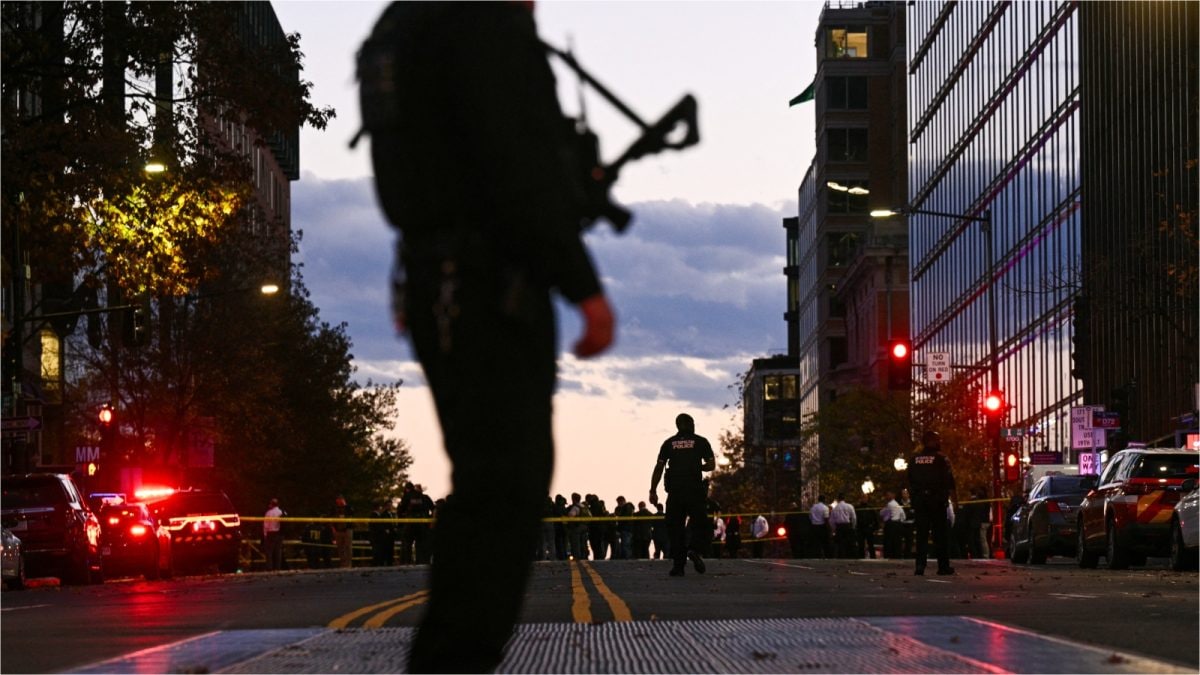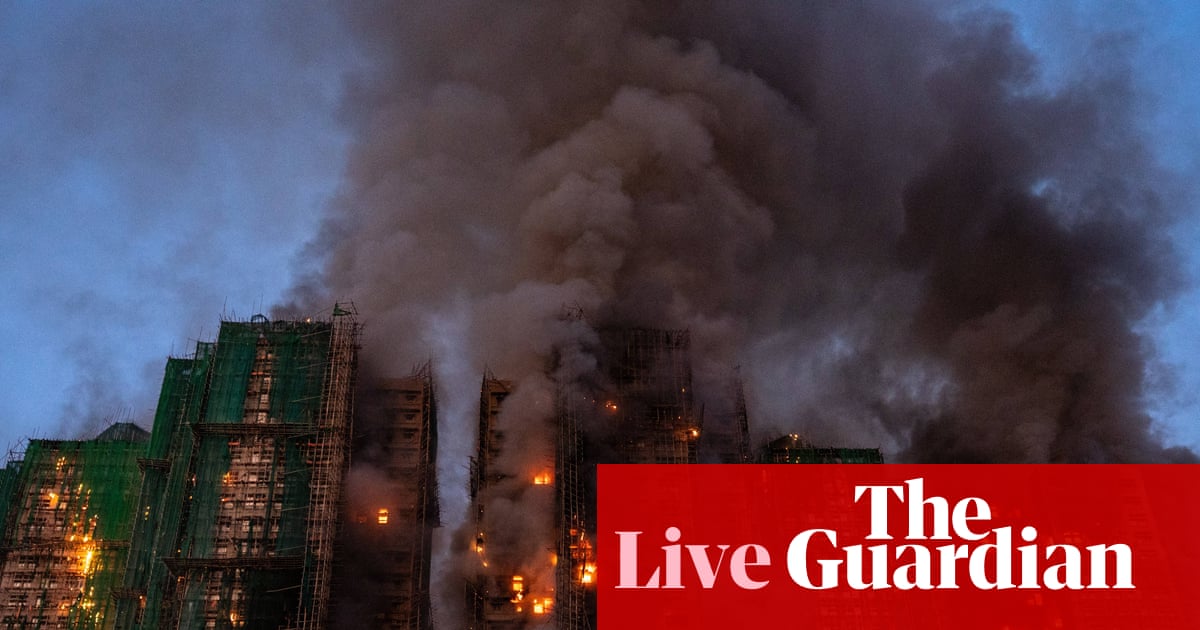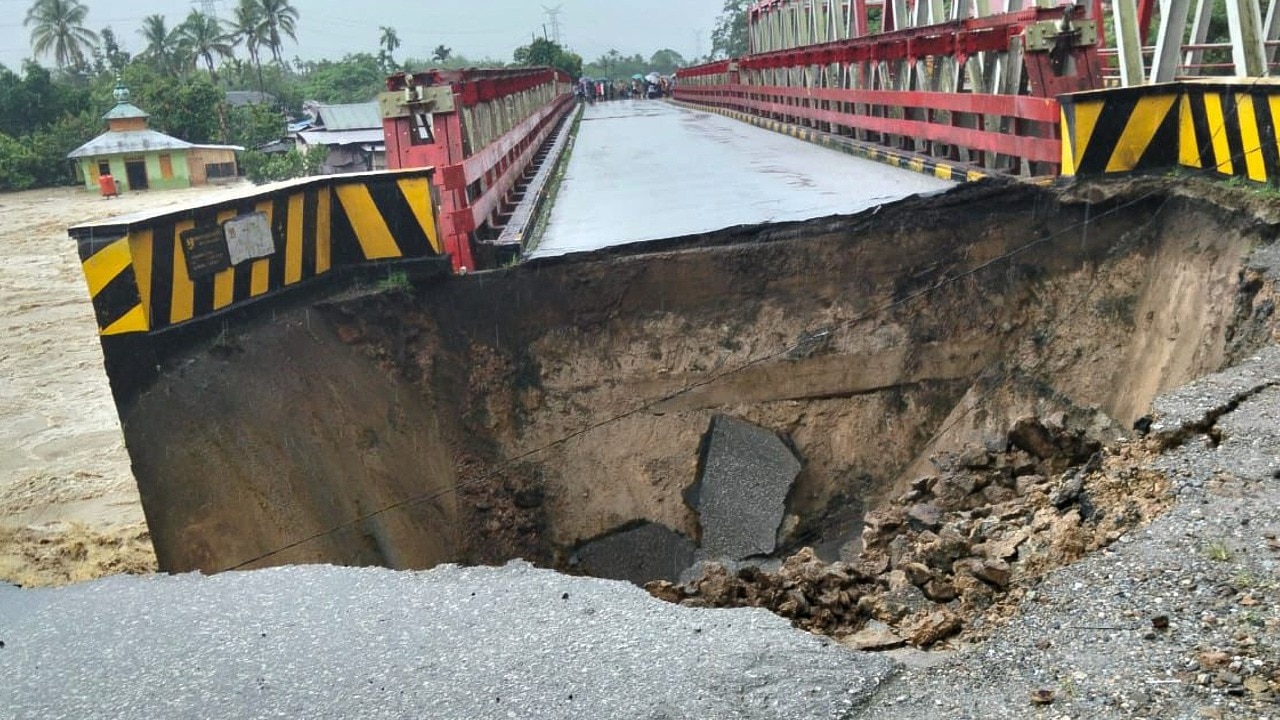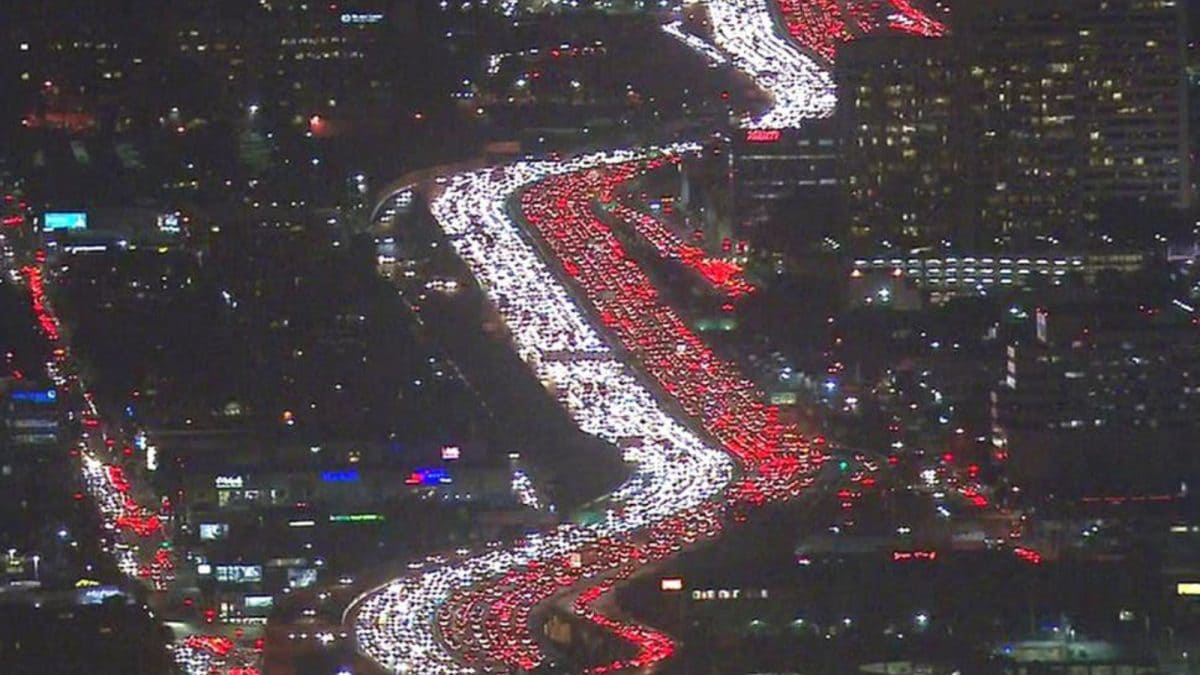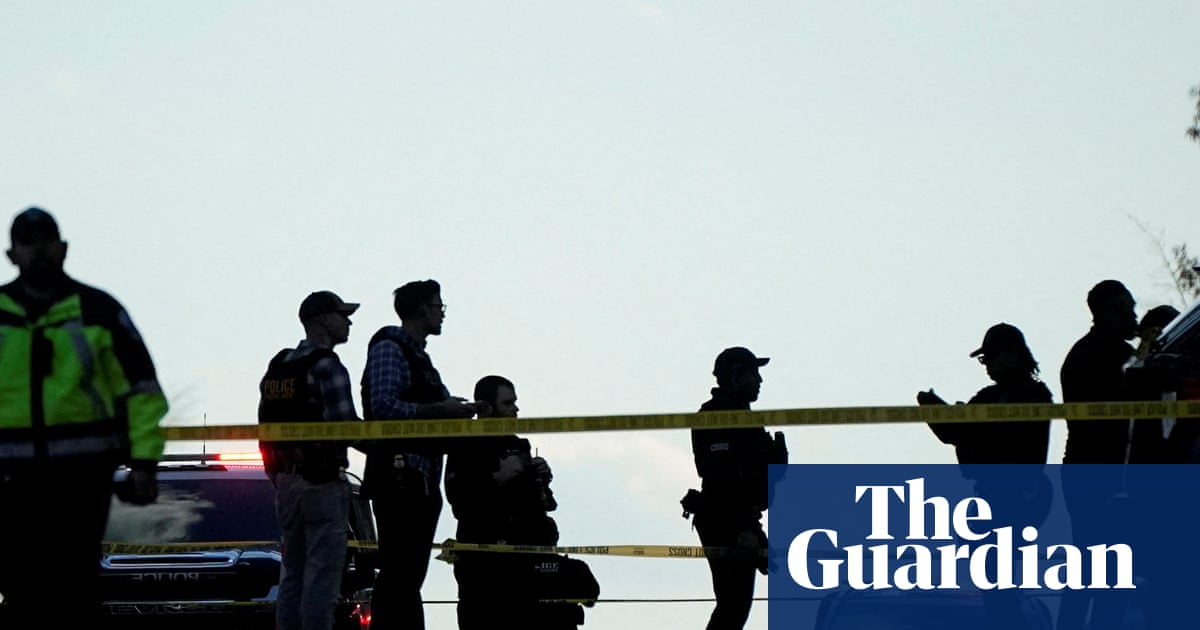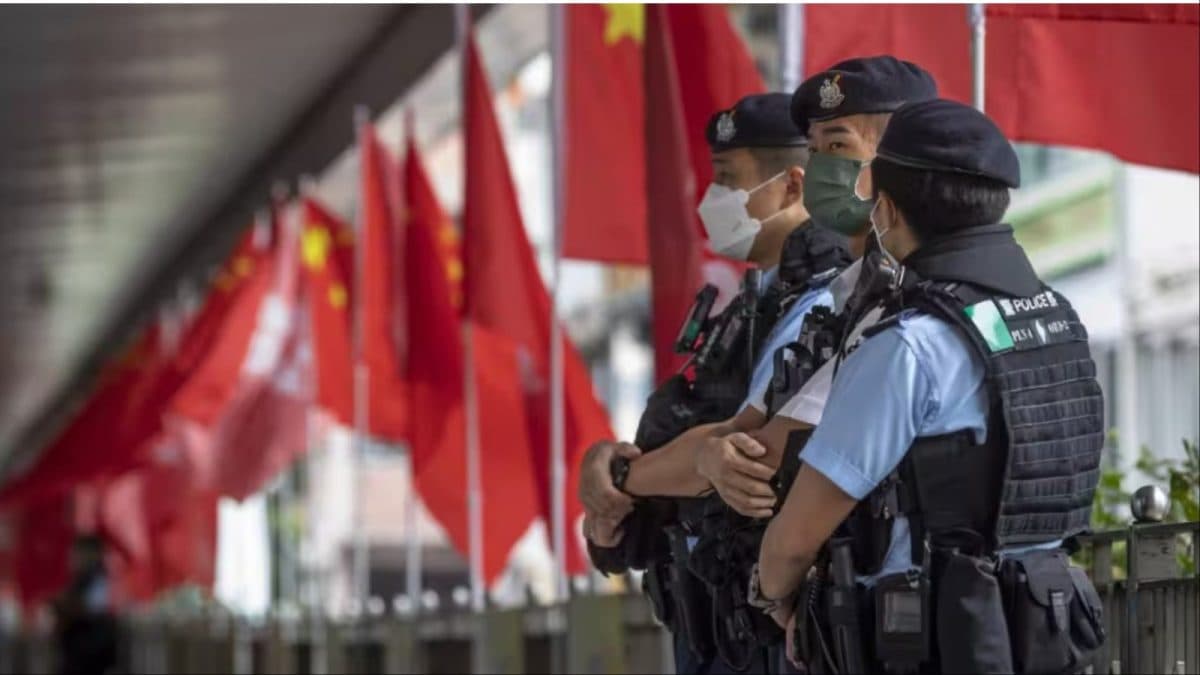Last Updated:November 27, 2025, 10:43 IST
In Mumbai, Pune, Hyderabad, scaffolding is covered with plastic sheets to protect from dust, rain. These sheets are highly combustible. Once they catch fire, they act like a tunnel

Efforts are underway to extinguish flames as fire engulfs high-rise residential buildings at the Wang Fuk Court complex on November 26, in Hong Kong, China. (Getty Images)
When a massive fire engulfed two high-rise residential buildings in Hong Kong’s Tai Po district, killing 44 people, the world watched in disbelief. In a matter of minutes, flames climbed up the outer walls, turning bamboo scaffolding and renovation tarps into a vertical fire ladder.
Residents, most of them asleep, had little time to react. Stairwells quickly filled with thick smoke, rescue ladders could not reach the upper floors, and many were trapped behind sealed windows in their own homes. By the time firefighters brought the blaze under control, dozens were dead, hundreds were injured, and the tragedy had become one of the deadliest urban residential fires in East Asia in recent years.
On the surface, it may seem like a distant event. But for fast-growing Indian cities, where high-rise living has become the new urban lifestyle, this tragedy feels alarmingly close. India is witnessing an unprecedented vertical-building boom, not just in major cities like Mumbai, Delhi, Hyderabad, Bengaluru, and Pune, but also in cities such as Lucknow, Chandigarh, Kochi, Jaipur, and Coimbatore. Yet, while the skyline is rapidly rising, our safety awareness has not kept pace.
The Hong Kong disaster reveals a truth India urgently needs to confront, that in high-rise buildings, fire behaves very differently. It does not just burn, it travels. It scales walls. It uses renovation scaffolding and plastic mesh like a staircase. It traps people where they feel safest, inside sealed homes.
And India, too, is building millions of homes that could be vulnerable.
How The Hong Kong Fire Became A Lesson In Urban Risk
In Hong Kong, the fire did not begin from the inside of an apartment. It started on the building’s exterior, reportedly where bamboo scaffolding, plastic safety sheets, and renovation debris were left without adequate fire protection. When the fire caught the scaffolding, the flames raced upwards. From one balcony to another. Window to window. Plastic drainage pipes melted, insulation caught fire, and external walls, which should have acted as a barrier, instead became fuel.
Residents described it as “a fire moving like wind". It was difficult to extinguish because tall buildings create wind tunnels that accelerate flames. Fire trucks could not reach the upper floors. Elevators were shut down. Staircases filled with smoke. Many residents never made it out.
This is exactly why experts now warn that any fire that starts on a high-rise façade is harder to control than one inside. And that is where India’s concern begins.
Why India Should Not Ignore This Incident
In recent years, India has seen a concerning rise in high-rise residential fires in Mumbai’s Bandra, Powai, Goregaon, Pune’s Kalyani Nagar, Gurugram’s Sector 67, and Hyderabad’s Madhapur. Some were caused by electrical short circuits, others by exterior cladding, malfunctioning AC units, or renovation debris.
India has recorded around 1.6 million fire accidents so far, involving 27,027 fire accident deaths. The most vulnerable victims were children below 10 and the elderly above 60 years, per NIST Global – an Indian company specialising in health, safety, and environments.
In almost every case, building residents were confident that they had safety systems until they failed to work.
India’s building pattern is risk-heavy: Rooftop solar installations, wooden balconies, AC compressors clustered outside windows, plastic shades, decorative panels, and scaffolding covered by flammable plastic during painting or waterproofing. Many residential societies, especially in Maharashtra, Delhi-NCR, Telangana, and Karnataka, undergo renovation every five to seven years, and rarely use fire-resistant scaffolding.
And while countries like Hong Kong and Japan are debating façade safety, India still has little regulation for external renovation safety, even in 30-storey or 50-storey residential towers.
India’s regulations for external renovation safety are primarily governed by the Building and Other Construction Workers (BOCW) Act, 1996, and the Building Code (NBC). These frameworks mandate safety measures such as personal protective equipment (PPE), fall protection for heights over 1.8 metres, secure scaffolding, proper electrical safety, and site safety management plans. Renovators must also obtain necessary permits from local authorities to ensure compliance with all relevant state and national safety standards.
The Scaffolding Danger India Is Ignoring
In Hong Kong, investigators believe the bamboo scaffolding and plastic netting accelerated the fire. In India, the same materials are used, but with less regulation.
In Mumbai, Pune, and Hyderabad, scaffolding is often covered with green or blue plastic sheets to protect from dust and rain. But these sheets are highly combustible. Once they catch fire, they act like a tunnel, guiding flames vertically. Foam-based insulation, PVC pipes, false balconies, and sun shades add to the fuel.
Renovation often blocks fire exits. Stairwells get cluttered. Emergency access points are sealed. In many places, balconies become storage spaces, filled with cardboard boxes, packaging materials, paint cans, and old furniture, waiting to burn.
During renovation, buildings become most vulnerable. Yet, most fire guidelines do not address this risk.
Why India’s High-Rise Fires Are More Dangerous Than We Think
Fire behaves differently in vertical spaces. In high-rise buildings, flames travel faster because of the chimney effect. Staircases, lift shafts, ducts, and even window gaps become vertical highways for smoke and fire. Rescue becomes harder because fire ladders cannot reach higher floors, and even drones are helpless in thick smoke.
In many Indian buildings, smoke extraction systems are outdated, sprinklers are non-functional, alarms are disabled because they ‘beep too often’, and emergency exits are sometimes locked for security reasons.
So, when a fire happens, evacuation is often improvisation.
Do Our Buildings Really Follow Fire Safety Rules?
India has strong fire norms on paper. The Building Code mandates that residential buildings above 15 metres must have sprinkler systems, functional alarm networks, smoke-proof staircases, ventilation ducts, and evacuation guides. But most buildings get fire clearance only at the time of construction. Once operational, maintenance checks are often absent. Residents may see extinguishers, but don’t know if they work.
In many societies, exit maps are nowhere to be found. Fire drills are not taken too seriously. Most residents don’t know the location of the assembly point. Some lift lobbies have safety instructions, but often in fine print.
And then there is the reality of illegal modifications such as basement gyms, modified lobbies, storage rooms built on evacuation routes, or terraces locked to stop outsiders.
What Happened In Hong Kong Could Have Happened In Mumbai Or Hyderabad?
Experts say it already has, almost. In 2018, a luxury 20-storey residential tower in Mumbai nearly caught full façade fire when its exterior ACP cladding ignited, and flames quickly climbed upward. Firefighters were able to stop the spread, but residents had minutes to escape.
In Hyderabad and Gurugram, AC compressor fires have climbed up external pipelines and burned through multiple balconies.
In Bengaluru, a multi-storey fire started from a generator shed and climbed up the terrace ducts through insulation and cable trays.
The risk exists, and it is real. The difference between disaster and survival often lies in whether systems worked, exits were open, and scaffolding was not fuel.
What Should Change In India Now
Urban safety experts believe this is the best moment for reform. Indian cities could introduce new norms that make renovation safer, enforce better fire maintenance, and hold housing societies accountable.
Some suggest rewriting norms that:
Require flame-resistant scaffolding during renovationBan plastic sheets, tarpaulin, and net covers on tall buildingsMake digital fire-safety reports mandatory and publicly availableRequire annual fire evacuation drills in all residential towersWhile enforcement may take time, awareness must begin now among residents, RWAs, home buyers, builders, and city planners. Because when safety hangs outside your window, quite literally, it deserves attention.
What To Conclude?
The tragedy in Hong Kong raises one crucial question for India. In the race towards modern living, are we forgetting safe living? India is becoming a nation of high-rise homes, beautifully lit balconies, glass façades, rooftop cafes, and luxury lifestyles. But every floor we rise, we increase vulnerability, unless safety rises with us.
Fire is not just a disaster that happens to others. It is a test of how seriously we value preparedness.
And the right time to think about fire safety is not during a fire, but before it ever begins.
Shilpy Bisht, Deputy News Editor at News18, writes and edits national, world and business stories. She started off as a print journalist, and then transitioned to online, in her 12 years of experience. Her prev...Read More
Shilpy Bisht, Deputy News Editor at News18, writes and edits national, world and business stories. She started off as a print journalist, and then transitioned to online, in her 12 years of experience. Her prev...
Read More
First Published:
November 27, 2025, 10:41 IST
News explainers Hong Kong Fire: A Wake-Up Call For India And The Lessons That Cannot Be Ignored
Disclaimer: Comments reflect users’ views, not News18’s. Please keep discussions respectful and constructive. Abusive, defamatory, or illegal comments will be removed. News18 may disable any comment at its discretion. By posting, you agree to our Terms of Use and Privacy Policy.
Stay Ahead, Read Faster
Scan the QR code to download the News18 app and enjoy a seamless news experience anytime, anywhere.


 4 hours ago
4 hours ago





